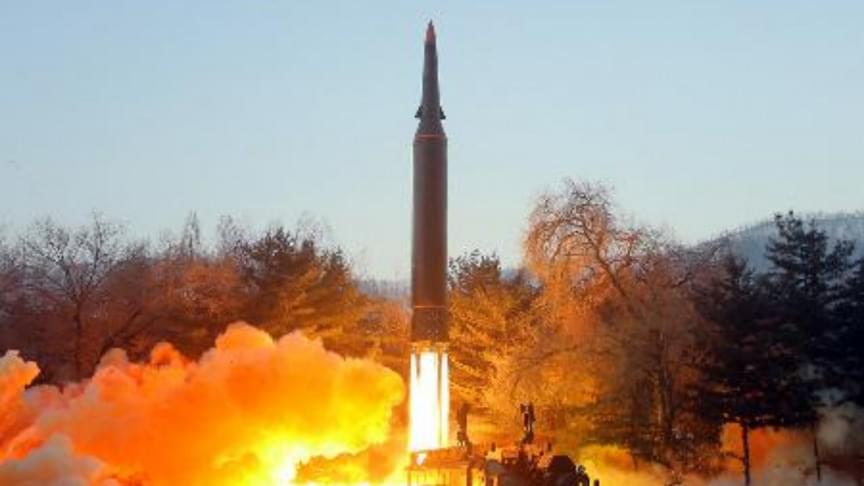Clues to the season of impact lingered in delicate fish fossils.
Around 66 million years ago, springtime in the Northern Hemisphere brought disaster and mass death to Earth in the form of a giant asteroid impact that triggered a global extinction.


This group appears to be doing its ‘bit’ for NEO identification and is always open to new members, check it out?
IAWN was established (2013) as a result of the UN-endorsed recommendations for an international response to a potential NEO impact threat, to create an international group of organizations involved in detecting, tracking, and characterizing NEOs. The IAWN is tasked with developing a strategy using well-defined communication plans and protocols to assist Governments in the analysis of asteroid impact consequences and in the planning of mitigation responses.


Machine learning can work wonders, but it’s only one tool among many.
Artificial intelligence is among the most poorly understood technologies of the modern era. To many, AI exists as both a tangible but ill-defined reality of the here and now and an unrealized dream of the future, a marvel of human ingenuity, as exciting as it is opaque.
It’s this indistinct picture of both what the technology is and what it can do that might engender a look of uncertainty on someone’s face when asked the question, “Can AI solve climate change?” “Well,” we think, “it must be able to do *something*,” while entirely unsure of just how algorithms are meant to pull us back from the ecological brink.
Such ambivalence is understandable. The question is loaded, faulty in its assumptions, and more than a little misleading. It is a vital one, however, and the basic premise of utilizing one of the most powerful tools humanity has ever built to address the most existential threat it has ever faced is one that warrants our genuine attention.
Full Story:
An international team of researchers has spotted the first isolated black hole that is wandering around in interstellar space.

These missiles are too fast to detect. Hypersonic weapons technology is at the heart of a new arms race. Currently, the US, China, and Russia are all competing to develop the most effective long-range hypersonic missiles. A recent report revealed that North Korea has also successfully tested a hypersonic missile on January 5, 2022, the country’s second reported test of a hypersonic missile.
North Korea has also referred to verifying the “fuel ampoule system” during this deployment which means that the liquid fuel used by the missile was sealed at production. This allows for rapid deployment even after the missile has been stored for long periods of time, while also reducing its vulnerability to pre-emptive strikes.
We have now seen what North Korea can do in quite imaginative ways.
NASA says an asteroid came within about 1.2 million miles of the Earth’s atmosphere on Tuesday afternoon. In 2013, Anderson Cooper reported on our ability to detect asteroids and comets that come close to Earth after another asteroid impacted the atmosphere over Russia.
“60 Minutes” is the most successful television broadcast in history. Offering hard-hitting investigative reports, interviews, feature segments and profiles of people in the news, the broadcast began in 1968 and is still a hit, over 50 seasons later, regularly making Nielsen’s Top 10.
Watch full episodes: http://cbsn.ws/1Qkjo1F
Get more “60 Minutes” from “60 Minutes: Overtime”: http://cbsn.ws/1KG3sdr.
Follow “60 Minutes” on Instagram: http://bit.ly/23Xv8Ry.
Like “60 Minutes” on Facebook: http://on.fb.me/1Xb1Dao.
Follow “60 Minutes” on Twitter: http://bit.ly/1KxUsqX
Download the CBS News app: http://cbsn.ws/1Xb1WC8
Try Paramount+ free: https://bit.ly/2OiW1kZ
For video licensing inquiries, contact: [email protected]

About 66 million years ago, a “planet killer” — a 10-kilometer-wide rocky asteroid — hit Earth. The Chicxulub impact caused a mass extinction on a planetary scale, killing off an estimated 76 percent of all species living on Earth at the time, including the dinosaurs. According to a study published by Philip Lubin and Alexander N. Cohen, both physicists at the University of California in Santa Barbara, there is a chance that humanity could survive such a similar impact happening in the near future.
There currently are about 1,200 asteroids on a publicly available asteroid risk list, but all are smaller than one kilometer. The probability of a Chicxulub sized asteroid (5 to 15 kilometers across) hitting Earth is once in a billion years — very low, but not impossible.
A new video I posted on Population Collapse.
Are we facing a Population collapse?
Can the decline in fertility rate lead to extinction?
Since the 1970s’ many books and movies warned the public the one of the biggest issue our planet face is overpopulation. (#Soylent Green)
But in recent years humanity faced a sharp decline in fertility rate that may change the trajectory of human population growth in the future, and may lead to a population collapse. (Children of Men)
Topics include the prospects of technological acceleration, Metaverse development and immersive computing, transcendence and cybernetic immortality, neurotechnologies and mind uploading, outer and inner space exploration, Global Mind and phase transition of humanity, physics of time and information, consciousness, evolutionary cybernetics, Chrysalis conjecture and Transcension hypothesis, Artificial General Intelligence and cyberhumanity, transhumanism and singularity, Fermi Paradox, Omega Point cosmology, Cybernetic Theory of Mind, and more. https://www.ecstadelic.net/e_news/metaverse-news-network-liv…x-vikoulov #Metaverse #Singularity #Transhumanism #Transcension #Futurism #Cybernetics #SyntellectHypothesis #AlexVikoulov